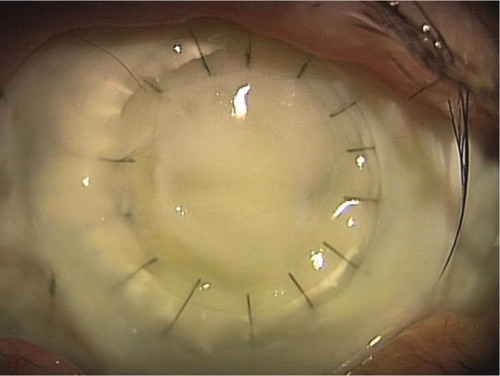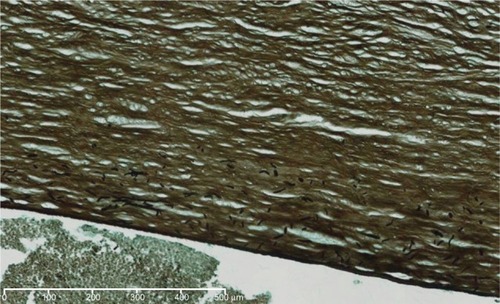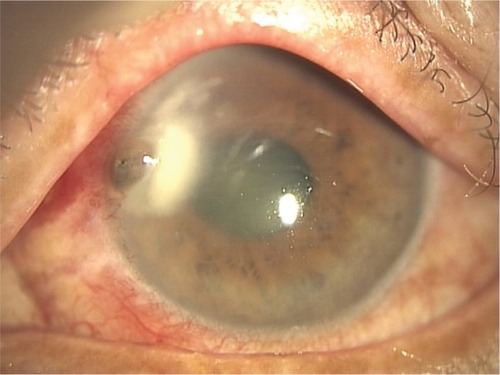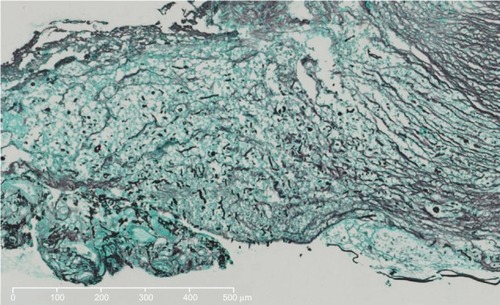Figures & data
Table 1 Epidemiological data and outcomes of all subjects
Figure 1 Case 4 (pre-injection). The corneal abscess caused by Aspergillus flavus has spread to most of the grafted cornea.

Figure 2 Case 4. Pathological findings of the removed cornea (Grocott’s staining). A substantial amount of fungi are observed just above the Descemet’s membrane.

Figure 3 Optical coherence tomography images of Case 1 (pre- and post-injection).



